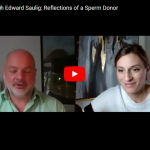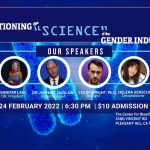(from the WeeklyStandard.com) In February 2004, Woo–Suk Hwang made world headlines whenhe claimed to have cloned human embryos using a technique calledsomatic cell nuclear transfer, and then to have derived a line of stemcells from the embryos that could be used for medical research.Enthusiasm for this first “successful” experiment in human cloning,published in the prestigious peer–reviewed journal Science, was tempered by the inefficiency of the process: It took 242 human eggs to get just one embryonic stem cell line.
That problem seemed solved when, last May, Hwang published another article in Scienceasserting that he had again successfully cloned human embryos, thistime deriving 11 stem cell lines and, moreover, reporting an astounding10–fold increase in egg–use efficiency. Cloning proponents weregiddy, declaring that the age of therapeutic cloning was nigh. Soon,they predicted, sick patients would be able to clone embryos made oftheir own tissue, from which, in turn, genetically matched stem cellscould be derived for use in regenerative medical treatments.
(from the WeeklyStandard.com) In February 2004, Woo–Suk Hwang made world headlines whenhe claimed to have cloned human embryos using a technique calledsomatic cell nuclear transfer, and then to have derived a line of stemcells from the embryos that could be used for medical research.Enthusiasm for this first “successful” experiment in human cloning,published in the prestigious peer–reviewed journal Science, was tempered by the inefficiency of the process: It took 242 human eggs to get just one embryonic stem cell line.
That problem seemed solved when, last May, Hwang published another article in Scienceasserting that he had again successfully cloned human embryos, thistime deriving 11 stem cell lines and, moreover, reporting an astounding10–fold increase in egg–use efficiency. Cloning proponents weregiddy, declaring that the age of therapeutic cloning was nigh. Soon,they predicted, sick patients would be able to clone embryos made oftheir own tissue, from which, in turn, genetically matched stem cellscould be derived for use in regenerative medical treatments.
Hwang’s paper was greeted joyously by cloning advocates and theirmedia allies in the United States for another reason: The research hadbeen done in South Korea. Hwang’s “breakthrough” therefore proved thatthe United States was “falling behind” in stem cell research. Hence,they argued, President Bush’s policy limiting federal funding ofembryonic stem cell research to lines created before August 9, 2001,must be overturned to permit American research to flourish.
Meanwhile, Hwang was lauded internationally as a genius and embracedby his countrymen as a national hero. The South Korean governmentcreated a postage stamp in his honor, depicting a figure leaping out ofa wheelchair. (Never mind that such therapeutic benefits remainedhypothetical; never mind that an unjustly neglected South Koreancolleague had already restored partial mobility and feeling to aparalyzed woman using umbilical cord blood stem cells that require nocloning and no sacrificed embryos.) Hwang looked like a Nobel laureatein waiting.
Then the roof caved in. In mid–November, Hwang’s American researchpartner, Gerald Schatten of the University of Pittsburgh, severed tieswith him, complaining that the South Korean had purchased the humaneggs used in his experiments-in violation of ethical canons requiringthat they be donated-and lied about it. Then came word that some of thephotographs depicting the stem cell lines that had accompanied Hwang’s2005 paper were duplicates, not originals. But this didn’t seem tooserious. Science claimed it was a production error.
Shortly after that, however, came rumors, followed by openaccusations, that Hwang had committed research fraud. A juniorresearcher said that rather than Science being to blame forpublishing the wrong photos, Hwang had actually forced him to submitduplicates to make it appear that his experiments had succeeded beyondtheir actual merit. Another of Hwang’s colleagues claimed that thesecond experiment had required hundreds more eggs than reported. Iftrue, it would mean that the egg efficiency problem with humantherapeutic cloning remains unsolved.
But this was all a prelude to the real drama: On December 15, Roh Sung Il, one of Hwang’s 2005 Sciencecoauthors, charged that 9 of their 11 stem cell lines were faked, andthat the remaining two lines might not exist at all. South Koreanscientists, academics, and media clamored for independent verificationof all of Hwang’s work. At first, Hwang’s lab stonewalled. Then Hwangheld a press conference, and matters became even more confused.
His responses were chaotic, his story continually evolving. Hedenied faking the research. But he also acknowledged that only three ofthe embryonic stem cell lines had passed a necessary test to provetheir viability. Then, sounding like Captain Queeg, he claimed that hewas the victim of a nefarious plot in which someone, somehow, hadswitched his cloned stem cell lines with embryonic stem cells derivedfrom in vitro fertilization embryos. Finally, he asserted some of thestem cell lines had been destroyed by fungi, but that he was thawingfive frozen samples to prove he had actually created cloned embryos andderived stem cells from them.
Last Friday, however, all pretense of innocence was dropped, when aninvestigatory panel from Hwang’s university declared that at least 9 ofthe 11 stem cell lines were faked. (The other two are still underinvestigation.) The ruse apparently involved splitting an original cellsample into different test tubes and then claiming one cell line wasfrom the patient and one from a clone. In this way, Hwang somehowconvinced one of the world’s most prestigious journals-and through it,the world-that he was a historic figure in science. Hwang resigned hisuniversity post in disgrace.
Hwang’s implosion leaves the field of human cloning research in astate of meltdown. Their poster boy is at best a liar, at worst a fraudand a charlatan who never created human clones at all.
This debacle raises several interesting questions: What does it tellus about the thoroughness of the peer review process? Why were youngerSouth Korean scientists able to discover Hwang’s missteps when thepresumably more seasoned peer reviewers for Science failed?Will the American media take a cue from their courageous counterpartsin South Korea, who pursued this story until it cracked, and finallybring skepticism to their coverage of biotechnology? More to the point,will the adult/umbilical cord blood stem cell successes that haveemerged one after the other in recent years finally receive theattention they deserve in the mainstream press, which has been sointoxicated with embryonic research as virtually to ignore nonembryonicbreakthroughs?
Don’t count on it. The pro–cloning political forces, and theirmedia allies, recognize the potential of the Hwang fiasco to damagetheir cause, so they have quickly regrouped and begun to furiously spinthe story. The same voices that not long ago railed against PresidentBush’s stem cell funding policies for supposedly allowing America tofall behind the cutting–edge research in South Korea, now indignantlyblame Bush for creating a hyper–competitive atmosphere that led toHwang’s failures. “Ethics can get forgotten as other nations andprivate companies race to fill the void left by the president’sreluctance to fund stem cell research,” wrote bioethicists ArthurCaplan and Glenn McGee in the Albany Times Union. “Only a properly funded U.S. stem cell research program will guarantee oversight and the protection of all involved.”
That might possibly be true if scientific fraud were the onlyethical problem associated with the human cloning agenda. But it isn’t.Indeed, t
he bioethicists should ponder how science’s core values ofintegrity and objectivity are being corroded by the passionatepolitical pursuit of a legal license to clone.
For years, human cloning has been promoted through propagandatechniques of misrepresentation, exaggeration, and false hope for thesuffering. Take the profoundly deceptive $35 million political campaignthat last year convinced California voters to pass Proposition 71,authorizing the state to borrow $3 billion to subsidize research intosomatic cell nuclear transfer cloning and embryonic stem cells. Inorder to induce wary voters to endorse billions more in debt despitethe red ink flowing catastrophically out of California’s coffers,proponents promised that the state would one day garner a bounteousreturn from royalty and tax payments, perhaps eventually recouping allthe money borrowed to fund the initial research. (Voters should haveasked themselves why, if this were true, the state’s numerous venturecapitalists hadn’t been clever enough to fork over the $3 billion.)
Thus Robert Klein, the driving force behind the initiative and nowhead of the California Institute for Regenerative Medicine, assuredvoters that universities and private firms receiving grants would share$1 billion or more in royalties with the state. But, as reported by theSan Francisco Chronicle and elsewhere after the election, it nowappears that little, if any, royalty money will ever be returned to thestate. “What Klein knew before the election was that suchroyalty–sharing by the state might be hampered by federal regulations,according to an attorney who helped Klein draft the initiative,” the Chronicle reported. “Yet he didn’t tell voters.”
That wasn’t all. When opponents of Proposition 71 asserted in theofficial ballot arguments that the initiative would subsidize humancloning, the pro–71 campaign sued to prevent the argument from beingmentioned in the state’s voter election guide-even though theinitiative explicitly created a state constitutional right to conducthuman somatic cell nuclear transfer, the scientific name for a humancloning technique. (The judge saw right through the ruse, and ruledthat human cloning was at the heart of the initiative.)
Then there is the ongoing hype about the medical potential ofcloning, which reached cruel heights in the wake of President Reagan’sdeath from Alzheimer’s disease. Using the widespread public mourningfor Reagan as a backdrop, human cloning advocates argued thatAlzheimer’s could be cured if only the impediments to federally fundedembryonic stem cell research were pushed out of the way.
In fact, though, Alzheimer’s disease is extremely unlikely to be effectively treated with stem cells, whether cloned or natural. As Washington Postscience reporter Rick Weiss allowed in a June 10, 2004, article, “theinfrequently voiced reality, stem cell experts confess, is that, of allthe diseases that may someday be cured by embryonic stem celltreatments, Alzheimer’s is among the least likely to benefit.” This isbecause Alzheimer’s is a whole brain disease that “involves the loss ofhuge numbers and varieties of the brain’s 100 billion nerve cells-andcountless connections, or synapses, among them.”
If stem cells have little “practical potential to treatAlzheimer’s,” why do proponents of cloned–embryo research continue toinvoke a cure for Alzheimer’s in their sales pitches? Weiss quotedRonald D.G. McKay, a stem cell researcher at the National Institute ofNeurological Disorders and Stroke: “To start with, people need a fairytale. Maybe that’s unfair, but they need a story line that’s relativelysimple to understand.”
So where are we in the cloning debate? At this point, we don’t knowwhether human cloning has been successfully accomplished or not. Wedon’t know whether embryonic stem cells have been derived from clonedembryos. We don’t know to what depths the dishonesty of the seeminglymost successful researcher in the field actually descended.
We do know that cloning proponents in this country are avidin their desire for billions in federal and state money to pay formorally problematic and highly speculative research that the privatesector generally shuns. And we do know that some advocates ofthis public policy agenda are more than willing to play fast and loosewith the facts in order to get their way. In short, the human cloningagenda is falling into public disrepute-and for that, proponents of theagenda have no one to blame but themselves.
Wesley J. Smith is a senior fellow at the Discovery Institute and aspecial consultant to the Center for Bioethics and Culture. His mostrecent book is the Consumer’s Guide to a Brave New World.
© Copyright 2005, News Corporation, Weekly Standard, All Rights Reserved.
Author Profile
Latest entries
 Sperm DonationMarch 15, 2022Venus Rising with Edward Saulig: Reflections of a Sperm Donor
Sperm DonationMarch 15, 2022Venus Rising with Edward Saulig: Reflections of a Sperm Donor BioethicsMarch 13, 2022Dr. C. Ben Mitchell: 2022 Ramsey Award Winner
BioethicsMarch 13, 2022Dr. C. Ben Mitchell: 2022 Ramsey Award Winner #BigFertilityMarch 10, 2022Documentary Explores One Woman’s Journey through Egg Donation
#BigFertilityMarch 10, 2022Documentary Explores One Woman’s Journey through Egg Donation BioethicsMarch 9, 2022Questioning the “Science” of the Gender Industry
BioethicsMarch 9, 2022Questioning the “Science” of the Gender Industry


